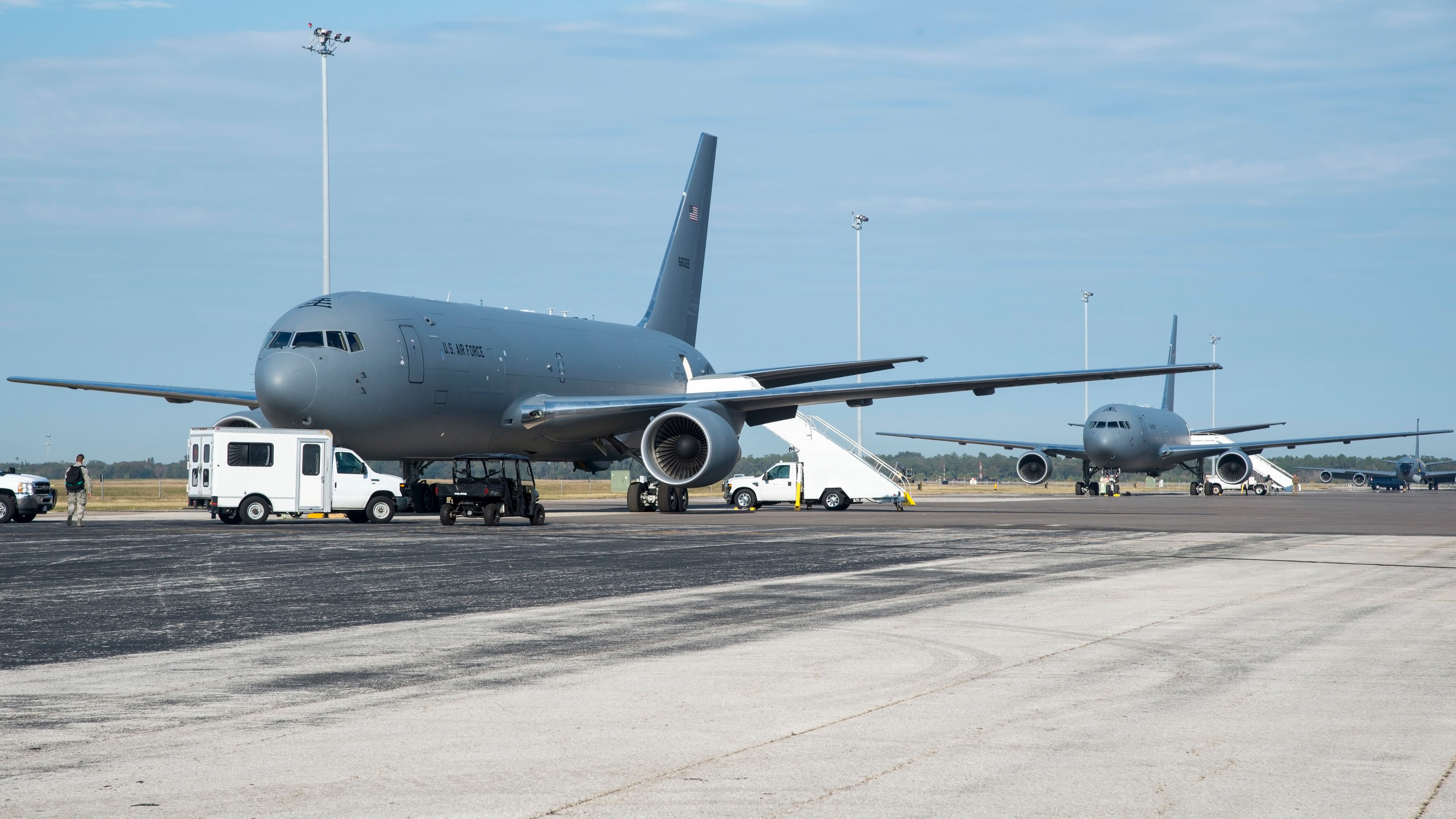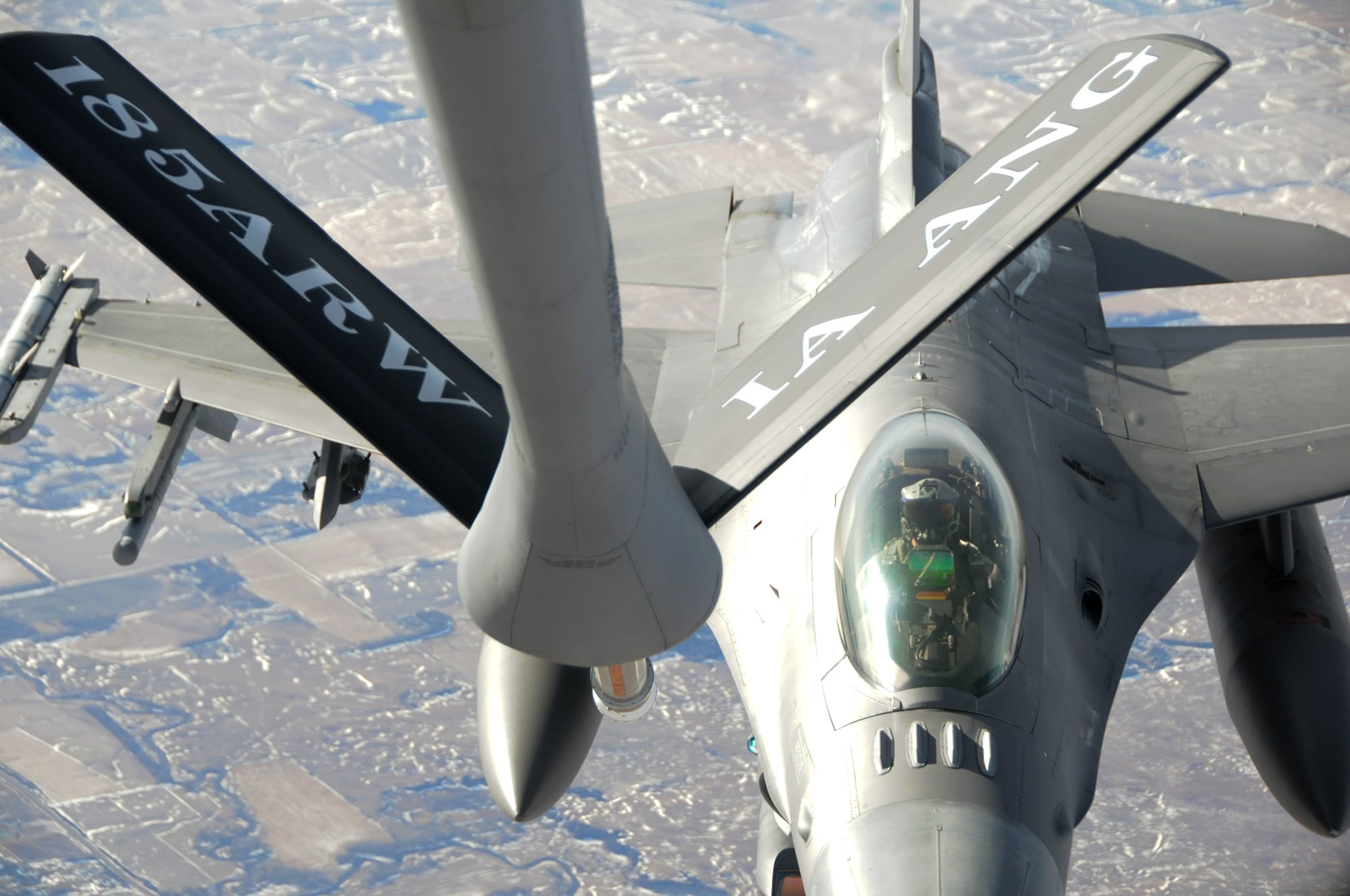WASHINGTON — The Air Force on Monday logged another critical technical flaw for the KC-46 tanker, this time revolving around excessive fuel leaks.
Under its contract with the service, KC-46 manufacturer Boeing is responsible for paying for a fix to the problem, Air Force spokeswoman Capt. Cara Bousie said in a statement.
“The Air Force and Boeing are working together to determine the root cause and implement corrective actions,” she said. “The KC-46 program office continues to monitor the entire KC-46 fleet and is enhancing acceptance testing of the fuel system to identify potential leaks at the factory where they can be repaired prior to delivery.”
RELATED

The problem was first discovered in July 2019, but the Air Force did not say why the issue had been escalated to Category 1 status — the designation given to problems with a significant impact on operations or safety. The service also did not immediately comment on questions about what sort of receiver aircraft were most involved with the deficiency or the severity of the problem.
A Boeing spokesman said that the Air Force had discovered 16 aircraft in need of repair, and that seven have already been fixed.
RELATED

“The KC-46 fuel system is equipped with redundant protection for fuel containment. In some cases with this issue, aircraft maintenance crews are finding fuel between the primary and secondary fuel protection barriers within the system,” the company said in a statement.
Boeing is working with “utmost urgency” to address the problem and implement a fix to the remaining aircraft, the statement said. A Boeing spokesman added it would take about 10 days to retrofit each aircraft at the rapid response depot facility in San Antonio, Texas. The fix was also being incorporated into production line in Everett, Wash., which is currently undergoing a temporary suspension due to COVID-19.
The latest Category 1 deficiency brings the total up to four:
- The tanker’s remote vision system or RVS — the camera system that allows KC-46 boom operators to steer the boom into a receiver aircraft without having to look out a window and use visual cues — provides imagery in certain lighting conditions that appears warped or misleading. Boeing has agreed to pay for potentially extensive hardware and software fixes, but the Air Force believes it will system won’t be fully functional until 2023-2024.
- The Air Force has recorded instances of the boom scraping against the airframe of receiver aircraft. Boeing and the Air Force believe this problem is a symptom of the RVS’s acuity problems and will be eliminated once the camera system is fixed.
- Boeing must redesign the boom to accommodate the A-10, which currently does not generate the thrust necessary to push into the boom for refueling. This problem is a requirements change by the Air Force, which approved Boeing’s design in 2016. Last year, Boeing received a $55.5 million contract to begin work on the new boom actuator.
Boeing’s fixed-priced firm contract for the development of the KC-46 has a $4.9 billion ceiling that leaves the company responsible for any expenses billed in excess of that amount. So far, the company has paid more than $3.5 billion of its own money to fund corrections to ongoing technical issues.
Valerie Insinna is Defense News' air warfare reporter. She previously worked the Navy/congressional beats for Defense Daily, which followed almost three years as a staff writer for National Defense Magazine. Prior to that, she worked as an editorial assistant for the Tokyo Shimbun’s Washington bureau.






